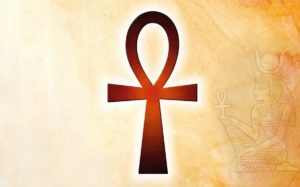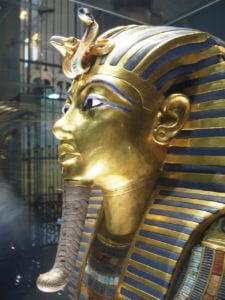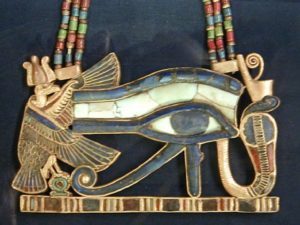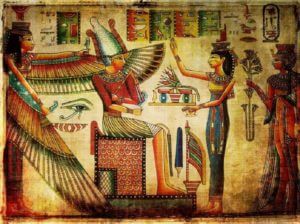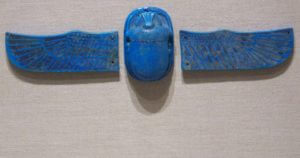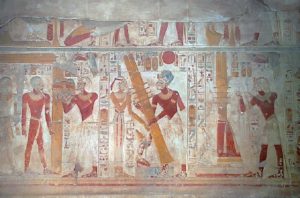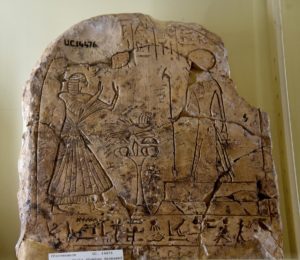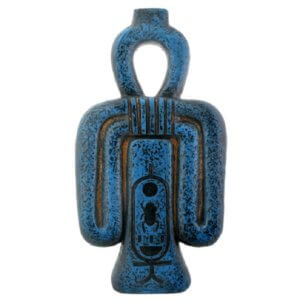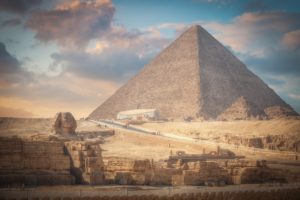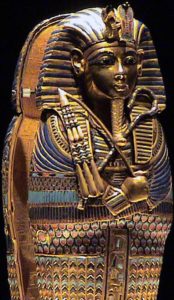
10 ancient Egyptian symbols
 13. 06. 2018
13. 06. 2018

Pharaoh's Land, as I like to call Egypt, is full of incredible stories and symbols. Ancient Egyptian civilization left its traces in historical records thousands of years ago. She built some of the the most amazing monuments on the planet, because the ancient Egyptians were experts in a range of knowledge, from astronomy, medicine to engineering, and writing.
The culture of ancient Egypt is full of mythology. Much of their history is a mixture of verifiable facts, including those that are embedded in myths, to help the ancient Egyptians try to explain the events that have taken place and which have been difficult to explain - the causes of death, disease, harvest results,
Everything we see is related in one way or the other with incredible stories, mythologies and their convictions, which is precisely why the ancient Egyptians have created countless symbols to explain everything. In this article I invite you to travel with me ...we will explore some of the most important ancient symbols used by the Egyptian civilization thousands of years ago.
Ankh - the Sacred Cross
It is undoubtedly one of the most famous symbols associated with ancient Egyptian civilization. Also known as "the sacred cross„. This ancient Egyptian hieroglyphic ideogram symbolizes life. Many ancient Egyptian gods are portrayed as carrying Ankh for his loop. The symbol is often displayed in the hand or near almost all deities of the Egyptian pantheon, including pharaohs.
Uraeus - Sacred Cobra - Symbol of Royal Iconography
Tutankhamun's mask with uraeus from the eighteenth dynasty is especially famous. It is Cobra display, symbolizing the goddess Wadjet along with the Nekhbet goddess on the front of the mask, they represent here the unification of Lower and Upper Egypt. Another popular symbol used in ancient Egypt was Uraeus. Uraeus is a stylized, upright form of Egyptian cobra. The symbol represents sovereignty, royalty, deity, and divine authority in ancient Egypt. Uraeus shows the golden mask of Pharaoh Tutankhamun.
The Mountain Eye
Another well-known ancient Egyptian symbol is the so- The Mountain Eye. This symbol was widely recognized as a protective sign, royal power and good health. In ancient Egypt, the eye is personified in the goddess Wadjet, a patron and protector of Lower Egypt, when united with Upper Egypt, was the protector and patron of all the gods of Upper Egypt.
Sesen - Lotus Flower
Another ancient Egyptian symbol, which represents life, creation, rebirth, and the sun, Yippee lotus flower. This ancient Egyptian symbol appeared during the early dynasties, although it became most popular in the later period. Sesen is symbolized as a lotus flower, which we see in ancient Egyptian depictions.
Skarabeus
Skarab was an extremely important ancient Egyptian symbol represented in form beetle. The symbol was associated with the divine manifestation of the morning sun of Khepri, which featured a rotating morning sun disk at dawn above the eastern horizon. The symbol of Skaraba was immense popular in ancient Egyptian culture in amulets and seals.
Djed - pillar djed
The depiction of the west wall of the Osiris temple in Abydos shows lifting the Djed column. This symbol is considered to be one of the oldest symbols of Egyptian culture. Symbol represents stability and related to the gods Ptah and Osiris. When representing Osiris, the symbol is often associated with a pair of eyes and a transverse beam between them, holding a crutch and a pin. The Jedi Column was of great religious significance to the ancient Egyptians.
Note: The ancient Egyptians claimed that the Djed columns were used in four corners of the Earth to keep Earth in place.
Was - Scepter
The illustration depicts the upper part of the stand representing the standing man adoring God Ra-Hora holding the scepter. It is one of the ancient Egyptian symbols, which was often displayed along with the Ankh cross.
It's supposed, that scepter represented ceremonial staff. The symbol of the scepter was displayed in the hands of a number of ancient Egyptian gods, especially Anubis and Seth. Interestingly, depending on how the symbol was described, the symbol could sometimes be understood to be a sign representing a creature with an extended head and a thin body. But that's just my impression.
Tyet - Isis node
The so-called tyet is an ancient Egyptian symbol connected with the goddess Isis. The symbol rarely resembles the Ankh cross. Tyet has his hands suspended down. We think that means welfare and life.
During the early "New Kingdom", the aunt amulets were buried with the dead. Chapter 156, the Egyptian "Book of the Dead", from which the new royal burial text originates, requires that a red amethyst made of red jasper be placed on the back of the mummy, stating that "the power of Isis will protect the body" and that the amulet " removes anyone who commits a crime against the body. ”
Ben-Ben
This ancient symbol is the most famous symbol of ancient Egypt, right after ankle, even if one does not know his name. As noted, ben-ben was the original cemetery on which God Atum stood at the beginning of creation. This symbol is connected with the pyramid, as these structures represent ben - ben as a staircase from Earth to Heaven.
Berla a cep
Another extremely popular symbol in ancient Egyptian art has been cork and pin. This symbol represents power and majesty of the king. Like many other symbols, it is also associated with Osiris and his early laws on Earth. The Egyptian Pharaohs carried these symbols during the important ceremonies. On the sarcophagus is depicted by Tutankhamun holding the crutches and the cep in their hands. Akhenaten - Egyptian heretical ruler, was often depicted with a crutch and a spear.





 1
1